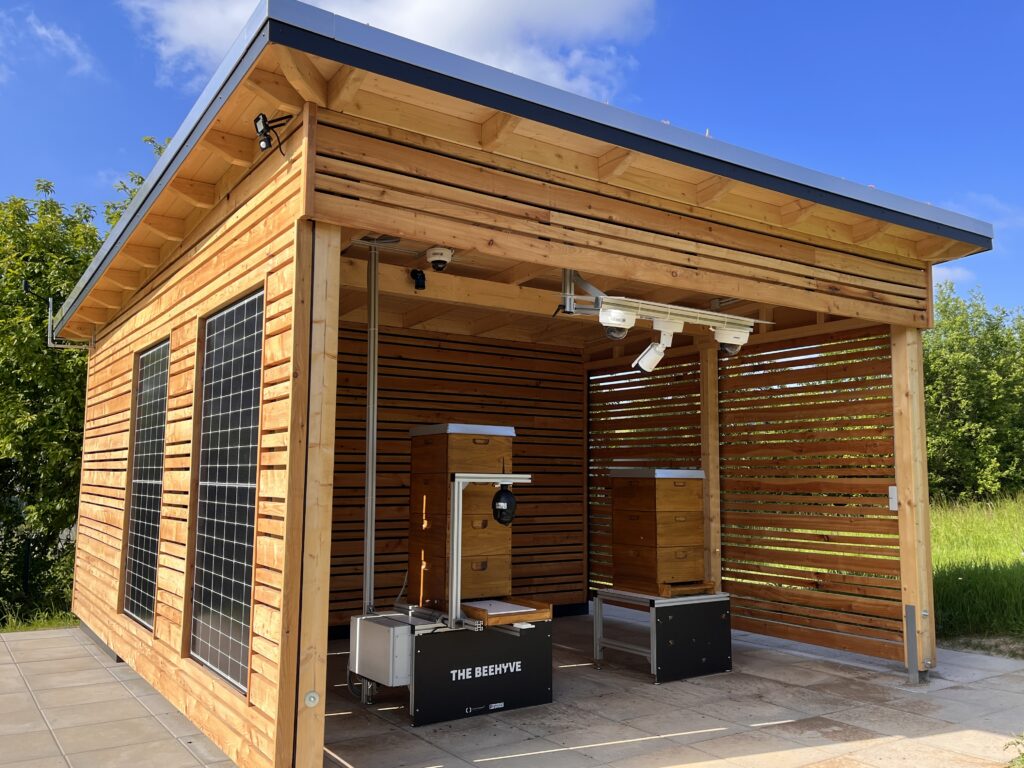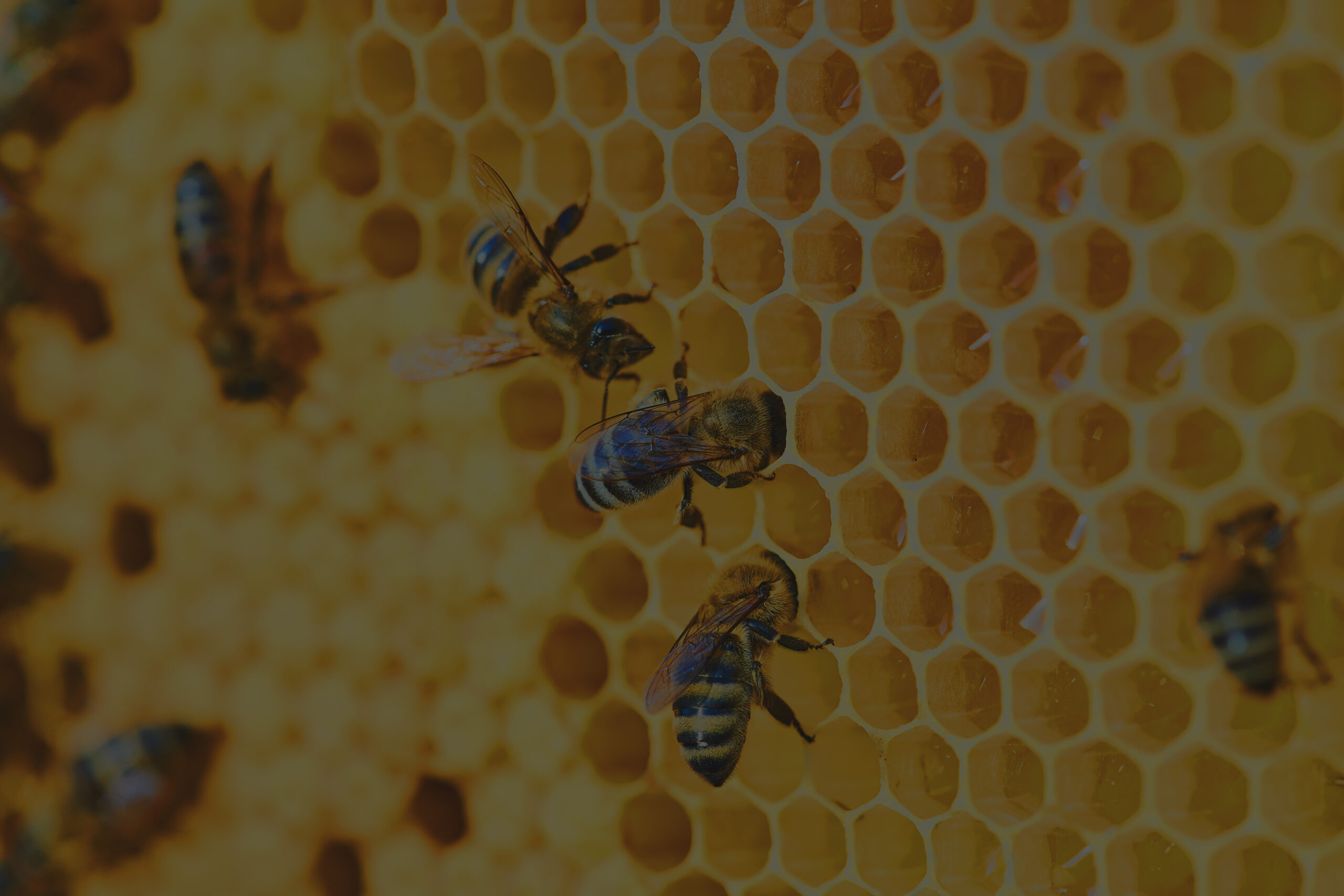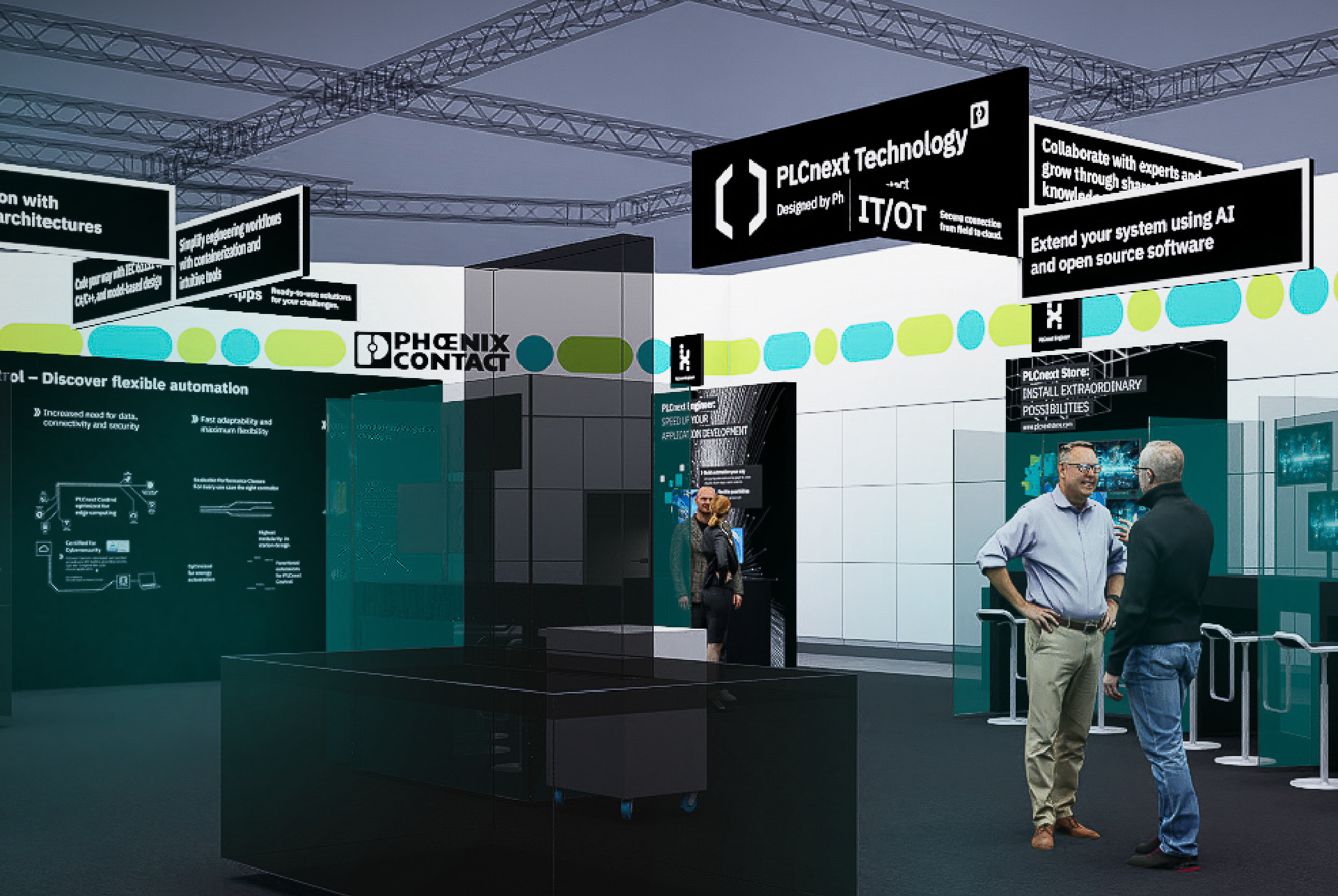How to make a Beehive smart?
The idea
Data is the currency of digitalization. This is especially true in the industrial environment. With the Beehyve project, we also want to bring bees into the IoT world and contribute to greater sustainability through the smart use of data. So if we now think of the hive as a smart home, we should equip it accordingly.
But how do you make a beehive smart?
- Install Sensors – These can collect data on the hive’s conditions and send it to a central hub or cloud platform for analysis.
- Add a smart hive monitoring system – This system can collect real-time data on the hive’s conditions and send alerts to beekeepers when conditions change. These alerts can help beekeepers make informed decisions about hive management and take action quickly to prevent problems.
- Use AI algorithms – You can use AI algorithms to analyze the data collected by the sensors and make predictions about the hive’s health and productivity. For example, you can use machine learning algorithms to predict when the hive is likely to swarm, or to detect signs of disease before they become apparent to the naked eye.
- Implement remote control features – You can use remote control features to adjust the hive’s conditions, such as temperature and humidity, from a distance. This can be useful for beekeepers who are unable to visit the hive regularly or who want to monitor the hive during off-hours.
Overall, making a beehive smart involves integrating various technologies and data sources to collect and analyze information about the hive’s conditions. This information can help beekeepers make more informed decisions and take proactive measures to maintain the health and productivity of their bees.
The solution
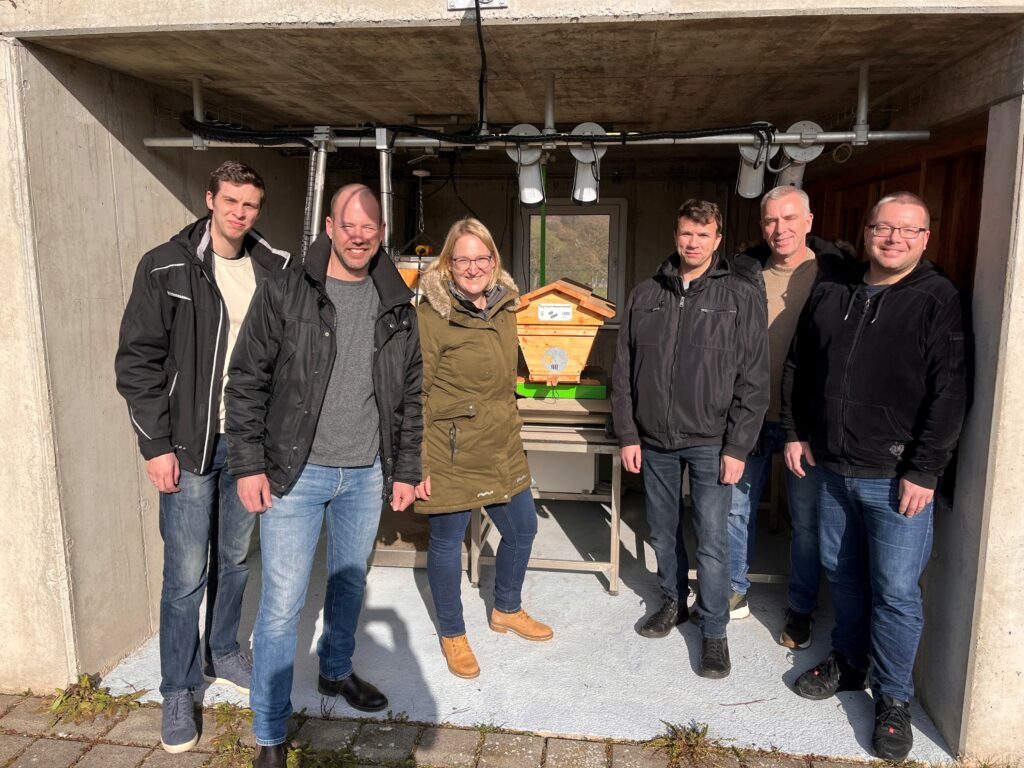
Bees are not necessarily fans of sensory technology in their home. Foreign objects in the hive are often cemented by the bees so that they no longer provide the desired data. Therefore, special rules apply to the installation of technical elements.
For us, this area is new territory – but not for others. That’s why we harness the power of swarm intelligence and seek to exchange knowledge with experts in the industry.
In this way, we were able to incorporate the feedback from the Hobos project directly into the technical setup in the Beehyve project.
How to build sensors into a beehive – using swarm intelligence
The starting point for building the smart hive is a standard wooden beehive.
How is a beehive typically constructed? A beehive typically consists of the following components:
- Hive stand: A sturdy platform on which the hive is placed, keeping it off the ground and preventing moisture from entering the hive.
- Bottom board: A flat board that serves as the base of the hive and provides an entrance for the bees to come and go.
- Brood boxes: Large wooden boxes where the queen bee lays eggs and where the young bees develop.
- Honey supers: sit on top of the brood boxes, where bees store their surplus honey. Like brood boxes, honey supers have frames where bees build their honeycomb.
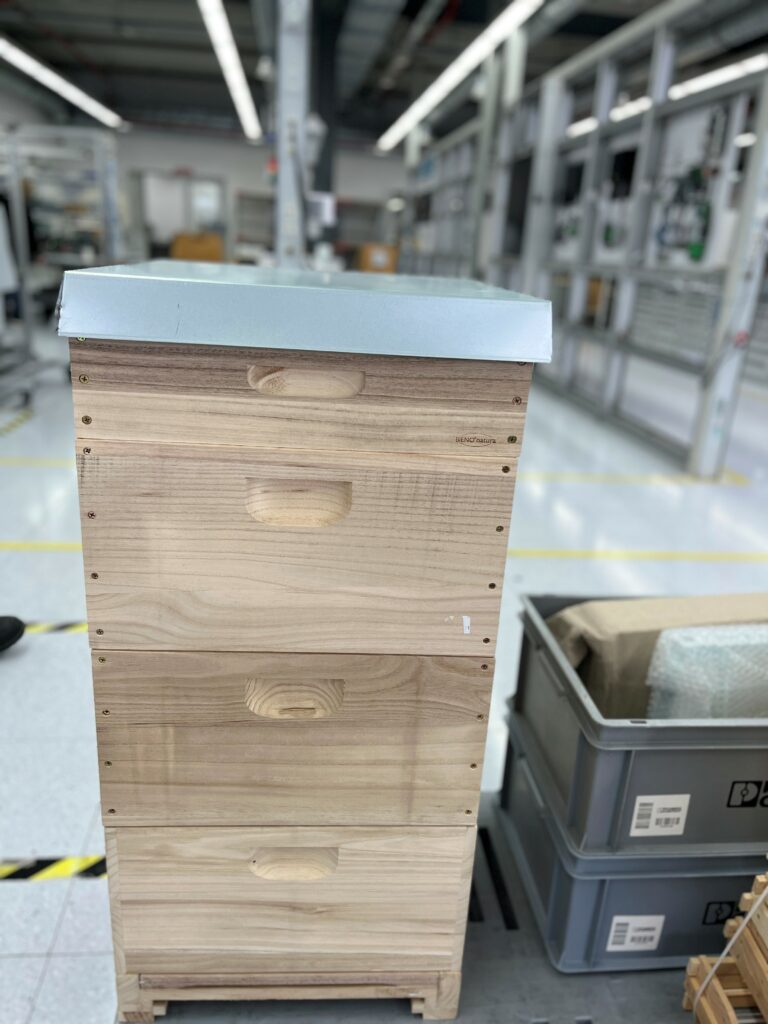
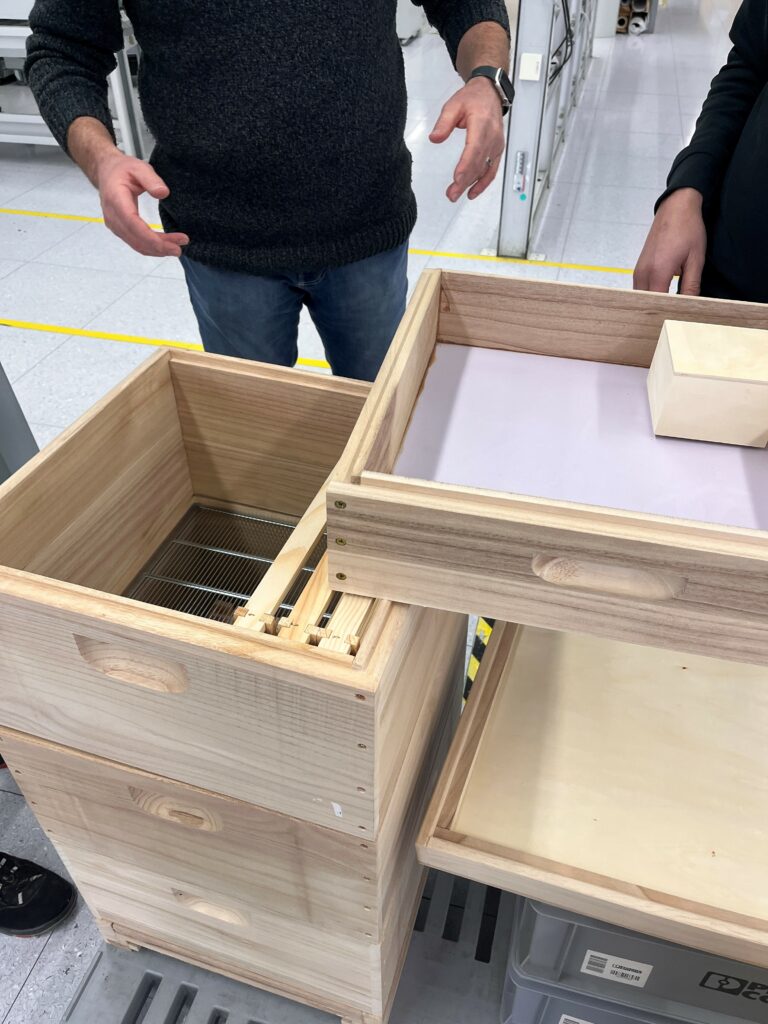
The technical set-up
In order to generate relevant bee-data we have defined a large set of sensors:
- 14 internal temperature sensors distributed between the two brood boxes of the hive
- 2 external temperature sensors at the front and the back of the hive
- a scale for accurate weight measurement
- a combined humidity and vibration sensor within the beehive
- an acoustic sensor inside the beehive
In addition, there are several cameras for visual inspection of the bee colony:
- a thermal imaging camera for a complete inspection of the beehive
- a network camera for monitoring of the flight hole
Since the weather is a significant factor in the activity of bees, we have provided a weather station in close proximity to the hive. This records data on wind strength, wind direction, humidity, light irradiation and temperature.
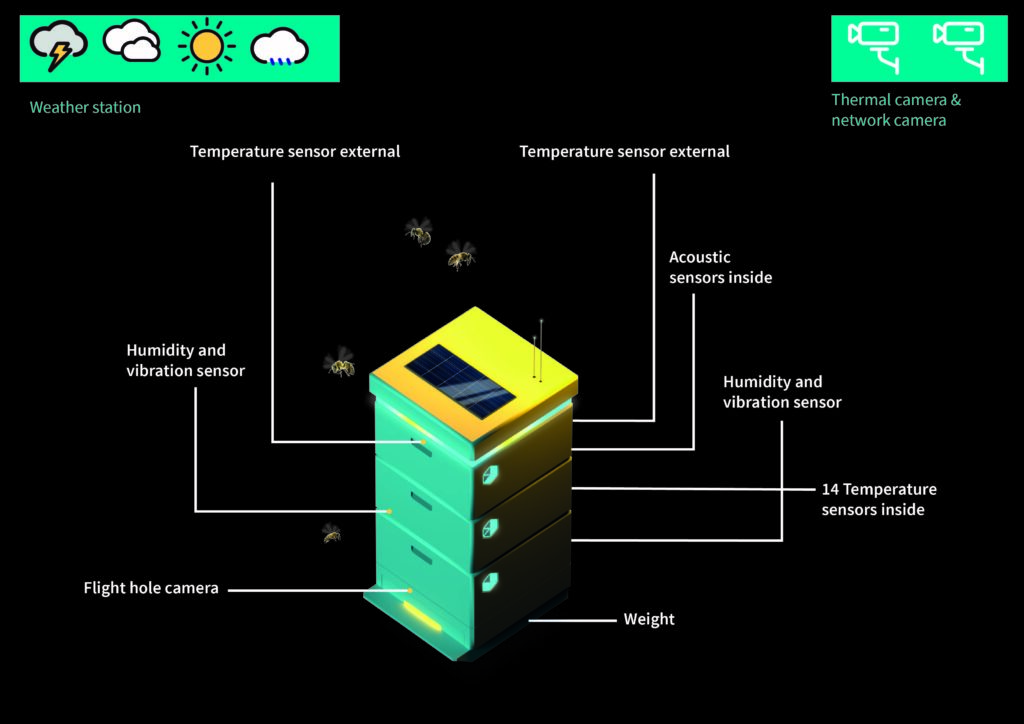
Apart from sensors the technical set-up also comprises a set of PLCnext Controls. The products in our Beehyve-project include:
- AXC F2152
- AXC F3152 including a ML extension module
- EPC 1522
- PBC 9102S
The sensor data will be send to the PLCnext Control AXC F2152. From there, the data is being distributed to the AXC F3152 in cases of machine learning applications or to the EPC 1522 for data processing on the Edge level. All camera data is being processed via the BPC 9102S.
All time-series data packages are available in the Proficloud for further use – may it be analysis or visualization.
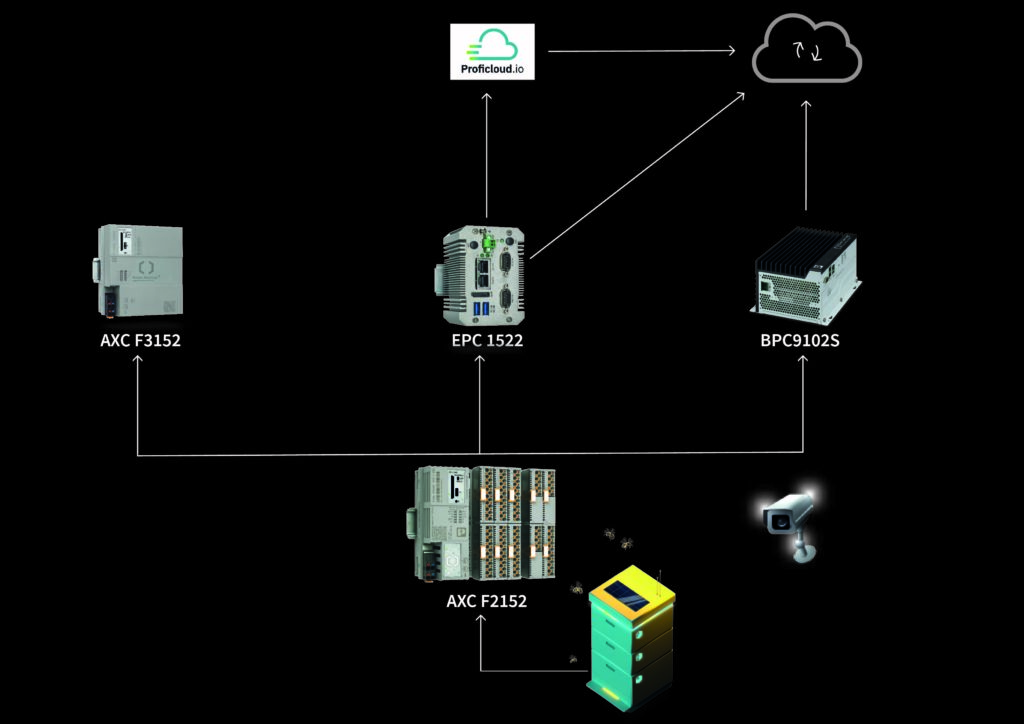
Preparing the bee meadow
We have found a great home for our bees on our company premises in Bad Pyrmont. In May, two bee colonies will move in here. Until then, there is still a lot to do. In addition to the construction of the technical hive, the meadow must also be prepared.
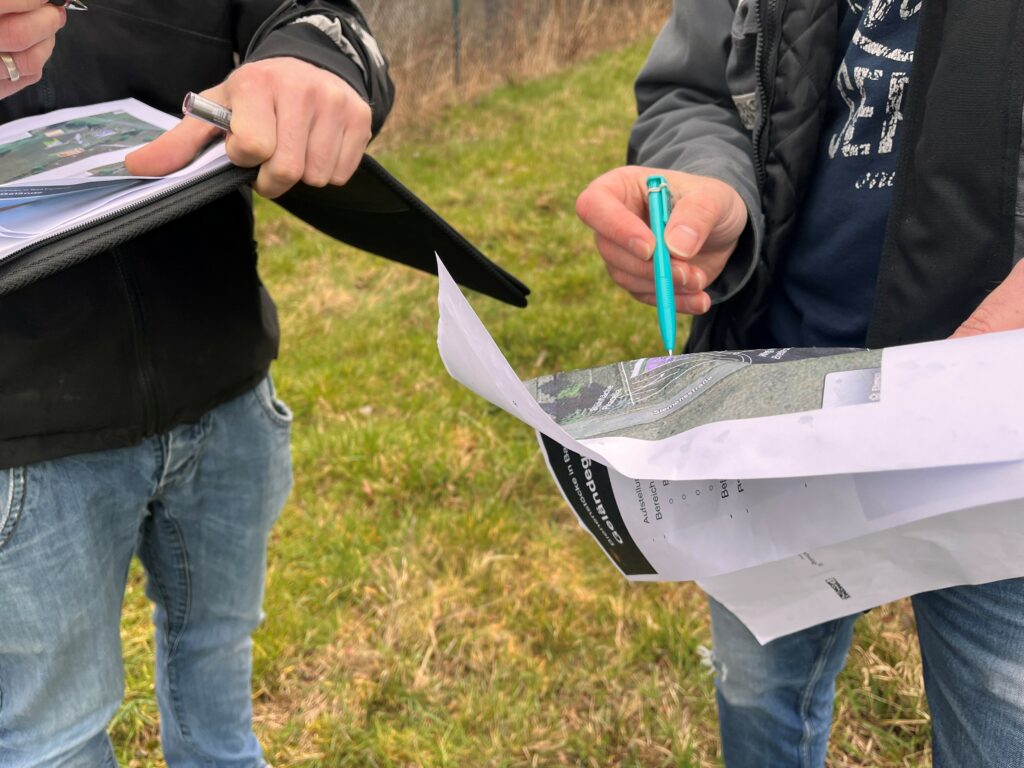
Do happy bees always need a flowering meadow? To clarify this question, we met with a representative of NABU – an institution that promotes biodiversity.
Together we assessed the quality of the meadow and found out: it doesn’t always have to be blooming flowers!
Our hive differs from other hives in one thing: it contains so much technology that we build an extra house for it. With the help of a local carpenter’s workshop, we drew up the plans for the beeport so that not only the bees but also the technology would find an adequate home.
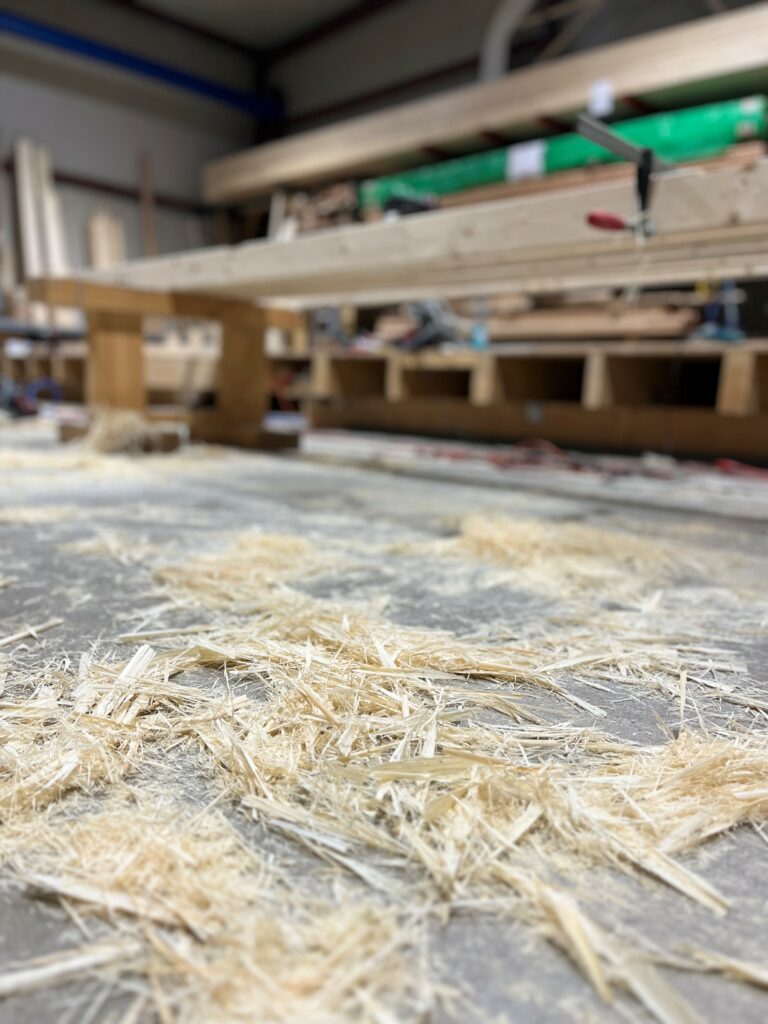
Et voilà! Our finished beehive
